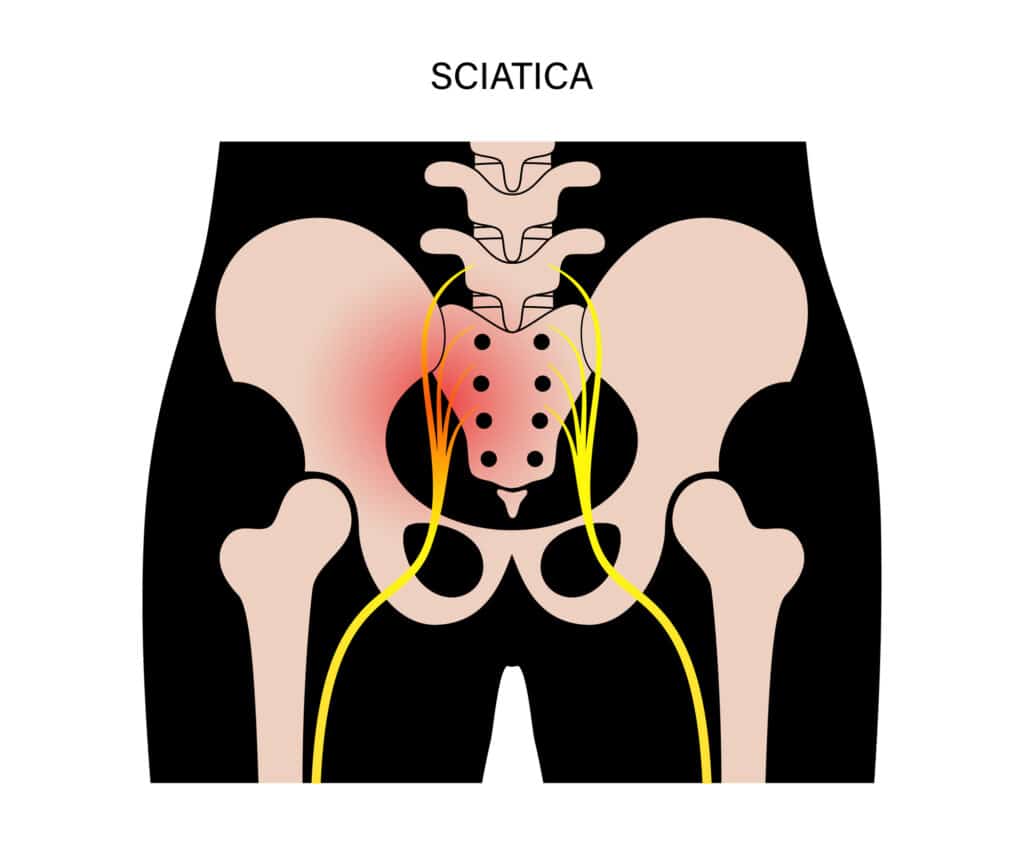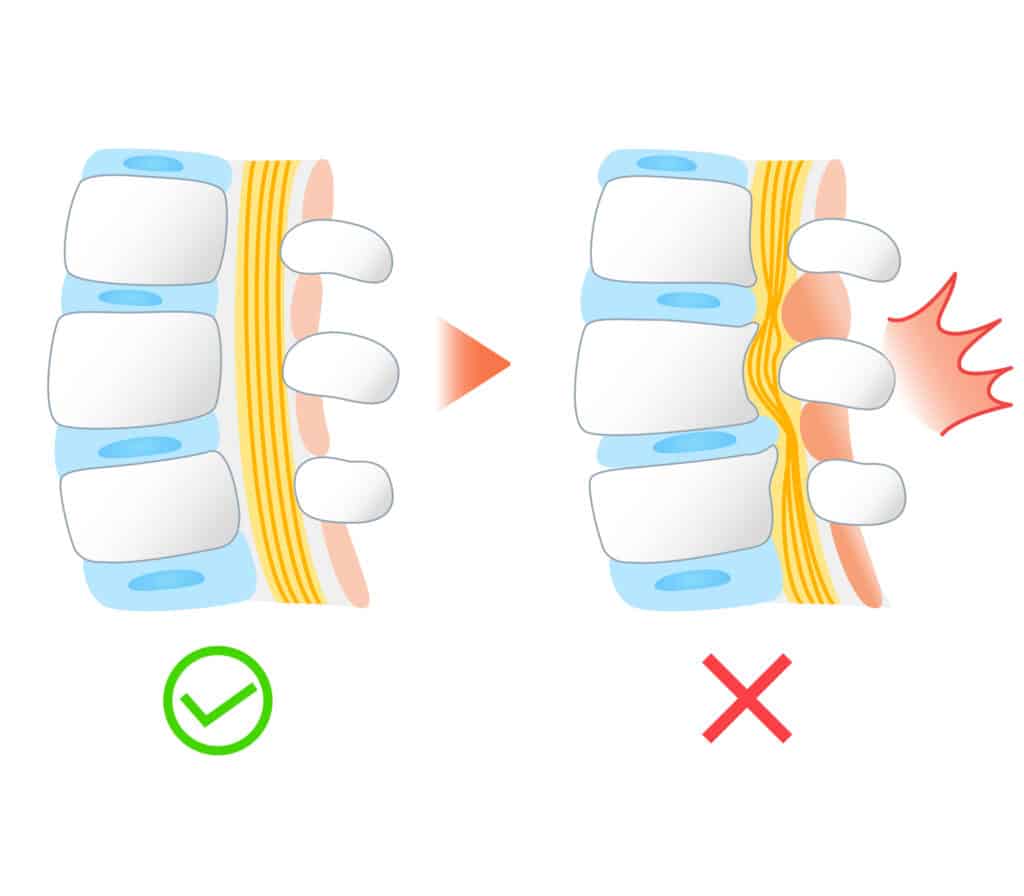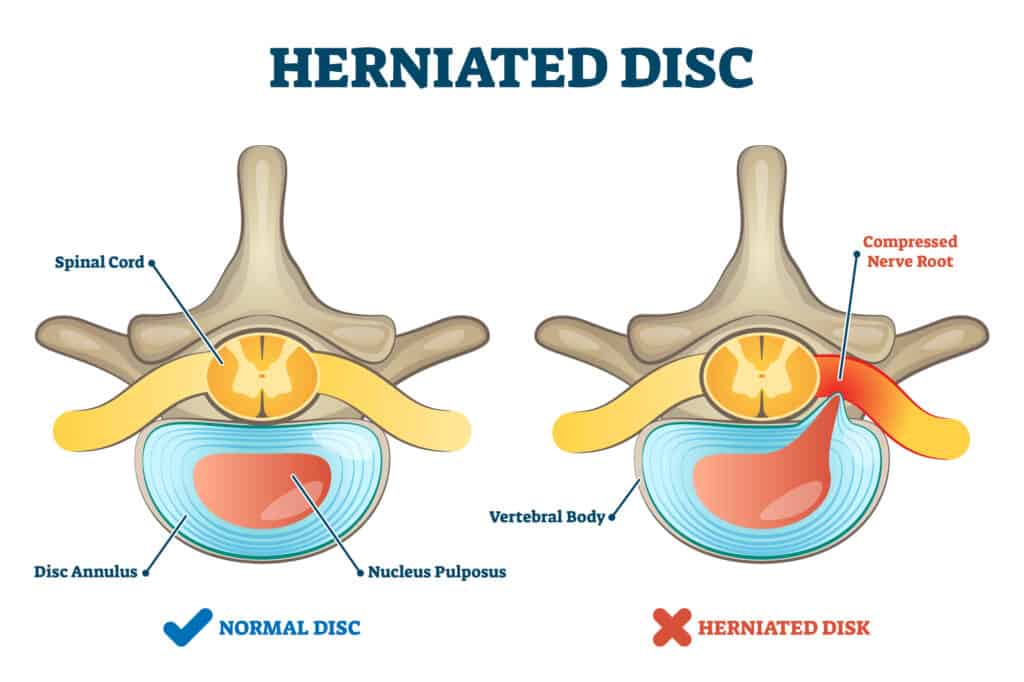
Well, we can tell you that the good news is that, yes, sometimes. You can get immediate relief from your sciatica pain. However, finding the right treatment that works for you can be difficult.
But depending on the severity of your sciatica pain and other factors, several options are available to give you some quick relief.
Sciatica pain can be a real pain in the backside- literally. While it is common, it can be agonizing and disruptive to your life.
This nerve pain runs down the back of your leg and can range from mild to debilitating. Lack of mobility can contribute to the pain. Still, the good news is that there are a variety of ways to get immediate relief.
With the right treatment plan, you should be able to find immediate relief from your sciatica nerve pain and the associated symptoms.
But keep in mind that the treatments we mention below are temporary solutions. If you're still feeling discomfort after trying these methods, getting professional advice from a physical therapist is important.
More Articles From Apex
Why Does My Neck Hurt?
Can Disc Herniations “Heal”?
What Is Causing Pain In My Shoulder?
The Best (And Fastest) Pain Relief Methods For Sciatica Pain

When dealing with sciatica pain, getting relief can be as simple as doing basic stretches or exercises recommended by a physical therapist.
But if you're looking for more immediate at-home remedies, try heat or ice therapies. Heat relaxes the muscles, while cold reduces inflammation.
Cold therapy is one of the most effective pain relief methods for sciatica. Applying a cold compress to the affected area helps reduce inflammation and reduces nerve pain.
You can also use an ice pack or bag of frozen peas – make sure not to keep it on for too long (10-20 minutes max), and always wrap the ice/peas, so you’re not applying directly to the skin.
Another option is taking over-the-counter pain medications such as ibuprofen, acetaminophen, or naproxen sodium.
These are effective in providing short-term relief from sciatica pain. However, we encourage you to pursue all other pain relief methods - including physical therapy - before resorting to medication. Why?
1) they have side effects and potential long-term (adverse) health consequences.
2) Physical therapy is an excellent way to relieve sciatica pain and can help you avoid pain medication, injections, and surgery.
But what causes sciatica pain in the first place?
What Causes Sciatica Pain?

Sciatica is a condition that causes debilitating pain in the lower back and legs that affects millions of people worldwide.
Not only is this type of nerve pain uncomfortable, but it can also severely limit your mobility and affect many aspects of your day-to-day life.
While the precise causes behind sciatica are often challenging to pinpoint without the help of a physical therapist, understanding the most common underlying causes – along with the effective treatments available for managing sciatica symptoms can help you begin to make sense of what might be happening with your body, and plan how you’re going to fix it.
The condition is characterized as pain in the lower back or legs because of irritation or compression of the sciatic nerve – the longest nerve in the human body.
The pain can vary in intensity and be felt anywhere along the nerve pathway from your lower back to your feet.
There are many potential causes of sciatica, ranging from a herniated disc or spinal stenosis to injuries, or it could be something as simple as sitting in an office chair for too long.
But although we’re going to explain the most common causes, understanding the underlying cause specific to you (with the help of a physical therapist) is the best way to alleviate the pain.
Is It A Herniated Disc or Sciatica?

As with many musculoskeletal conditions, the symptoms can often resemble or mirror other conditions.
Dealing with back pain is a frustrating experience. It can feel unbearable if you’re unlucky enough to be suffering from a combination of herniated discs and sciatica pain. But in most cases, the pain is due to one or the other.
Both herniated discs and sciatica pain are conditions that affect the spinal region, causing discomfort and limiting mobility.
A herniated disc occurs when the cushioning between vertebrae bulges out of place and presses on nearby nerves. At the same time, sciatica pain is caused by compression or irritation of the nerves that start in the lower back and travel to the legs.
These two conditions can impact anyone at any age and often result in severe pain, numbness, or weakness in the affected areas.
While there's no one-size-fits-all cure, various treatments are available to help alleviate symptoms and improve quality of life, including exercise and physical therapy.
Spinal Stenosis and Sciatica Pain: One of the major causes of sciatica pain is stenosis of the spine – where the spinal canal narrows and puts pressure on the nerves that run through the spine.
Stenosis alone can be incredibly debilitating wherever it occurs along the spine. But when it affects the sciatic nerve(s), it can cause significant discomfort and result in what we commonly call "sciatica."
When the narrowing of the spinal canal affects the sciatic nerve, it causes sciatica pain, characterized by a sharp, shooting pain that radiates from the lower back down through the legs.
If left untreated, both these conditions can become progressively worse and may require surgical intervention.
However, several non-invasive treatments, such as physical therapy and medication management, can help manage the symptoms, improve your quality of life, and keep you off the surgeon’s table.
Piriformis Syndrome and Sciatica Pain: Piriformis syndrome and sciatica pain can both be uncomfortable - affecting your daily life and preventing you from participating in activities you enjoy. But while the two conditions are often related, they are not the same thing.
Piriformis syndrome occurs when the piriformis muscle in your hip compresses the sciatic nerve, causing pain and discomfort in the buttocks, hip, and leg.
On the other hand, sciatica is a condition where the sciatic nerve is compressed, resulting in pain that can travel down the leg to the foot.
Both can be caused by a variety of factors, including injury, overuse, or even sitting for prolonged periods.
Treatment options for both conditions typically involve stretching, physical therapy, and medication. Still, speaking with a physical therapist is important to get a proper diagnosis and treatment plan.
Pregnancy and Sciatica Pain:
Pregnancy is a beautiful journey accompanied by various bodily changes. However, when those changes happen, some women experience sciatica pain during pregnancy.
Why? As we’ve already covered, sciatica pain occurs when the sciatic nerve, which runs from the lower back to the legs, becomes compressed or irritated.
This situation can happen in pregnancy due to the weight of the baby and the uterus pressing on the sciatic nerve.
The pain can range from mild discomfort to excruciating pain, making it difficult for pregnant women to walk or sit for prolonged periods.
But you can manage sciatica pain during pregnancy in several ways, including prenatal Pilates, massage, and physical therapy.
Therefore, if you are pregnant and experiencing sciatica pain, don't hesitate to talk to us; we can help.
How Does Physical Therapy Help With Sciatica Pain?

Physical therapy is an excellent option for sciatica pain, as it focuses on alleviating current pain and preventing future flare-ups.
We specialize in exercises and stretches that alleviate pain and improve your spinal mobility.
Over time, these exercises can help to strengthen weak muscles in your lower back and legs and prevent recurring problems.
When you attend the clinic to have physical therapy sessions to treat sciatica pain, we develop a specialized exercise program for your needs.
This plan will help improve your strength and flexibility in the areas around the sciatic nerve, which can quickly reduce or even eliminate sciatica nerve pain.
In our experience, one of the quickest paths to immediate relief of sciatica pain is through decompression. This technique reduces pressure on your sciatic nerve.
Typically, we achieve this decompression through specific exercises or using machines to stretch and elongate your spine.
Additionally, lifestyle changes such as avoiding prolonged sitting or inactivity can improve the outcome of your physical therapy session, and further reduce or (in most cases) eliminate sciatica pain.
So, while it can be debilitating at times, it is always possible to find ways to effectively manage sciatica pain and reduce your discomfort through physical therapy and lifestyle modifications.
If you are experiencing sciatica pain or any other type of chronic pain, please contact us to book a free consultation with a physical therapist to assess your symptoms and create a plan out of the pain for you.
Physical therapy is the most effective way to achieve both short and long term relief from sciatica pain.


